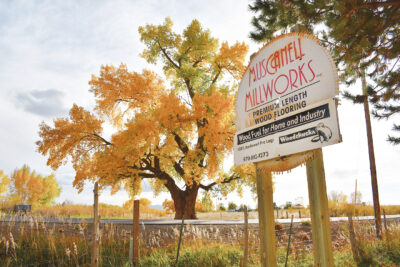It was a slow start to the new year as customers let their inventories slide over the end of 2023 and placed orders in December for January receipts, which caused a boost in current business by end of January. Most primary and secondary manufacturers did not see a significant increase in demand for Hardwood finished goods or grade Hardwood lumber. Best sellers noted are Hard Maple, Soft Maple and White Oak. There is some interest in Aspen, Basswood, and Beech. Sawmills have not been producing a lot in many areas. Prices vary widely, with items in short supply bringing higher prices. It was noted that kiln-dried prices were not rising at the same rate as green prices, putting pressure on concentration yards, especially. It was noted that railroad tie business was doing well, and wooden pallet and container manufacturers were slightly busier.
Depending on area contacted Ash business was good, while others’ activity had slowed. The large volume of Ash processed in the last few months of 2023 was now available for sale. Prices are mixed for kiln-dried stocks for this species.
Suppliers who process Aspen said that demand for this species is subdued. Many primary manufacturers reduced the volume of Aspen produced, but production remained high relative to market needs. In some areas kiln-dried inventories are elevated compared to demand, and competition for orders is noted as intense.
Basswood demand is seeing competition from other species, imported finished goods and other products that secondary manufacturers are using instead of this species which has negatively impacted its demand. Supplies are outpacing buyers’ needs for most grades and thicknesses, and prices are down. Kiln-dried inventories have increased. Markets are reported as weak for Basswood, and concentration yards and sawmills have ample inventories to meet buyers’ needs.
Birch demand is steady noted contacts, even though it has lost market share in non-traditional applications. Competition from non-wood raw materials, MDF and plywood have taken a share of this species’ market. Kiln-dried markets are controlled and suppliers have ample inventory on hand.
Green lumber supplies are low relative to the market’s needs for some grades and thicknesses. Kiln-dried inventories were edging down, pushing prices higher for several items of this species.
Soft Maple production has been reported as low with steady demand cutting into supplies. Sap and Better grades are preferred, but end users are buying all the better quality Unselected material they can. Contacts noted that kiln-dried business is better now than a few months ago. Good color material for Soft Maple is readily moving, stated contacts.
Red Oak demand on international markets is better, and domestic customers are now replenishing their inventories.
Finding quality logs of White Oak is challenging and mill output is limited, particularly for the upper grades. Kiln-dried inventories are thin, thus pushing prices higher, noted contacts.
According to Statistics Canada’s Natural Resource Indicators, Third Quarter 2023 report released in mid-January, real gross domestic product (GDP) of the natural resources sector decreased 0.6 percent in the third quarter, after edging up 0.1 percent in the second quarter. At the same time, the economy-wide real GDP fell 0.3 percent, following a 0.3 percent increase in the previous quarter. The decline in natural resources real GDP in the third quarter was attributable to the energy (-0.9 percent), minerals and mining (-0.2 percent) and hunting, fishing and water (-0.2 percent) subsectors. The real GDP of the forestry subsector edged up 0.1 percent.
Real GDP of primary sawmill and wood products advanced 0.5 percent, coinciding with a 6.5 percent rise in new home construction in the third quarter. This increase was partially offset by a decline in primary pulp and paper products (-1.7 percent).
Natural resources export volumes fell 3.6 percent in the third quarter as the energy (-4.9 percent), minerals and mining (-2.7 percent) and forestry (-0.3 percent) subsectors all declined.
Import volumes of the natural resources sector (-1.9 percent) declined in the third quarter. Import volumes increased in the third quarter for the forestry subsector (+1.1 percent) due to primary sawmill and wood product imports rising 1.6 percent.
Overall, natural resource prices increased 4.1 percent in the third quarter. Prices fell in the minerals and mining (-4.0 percent) subsector but were offset by increases in the energy (+7.4 percent) and forestry (+4.7 percent) subsectors in the third quarter. Coal (-8.0 percent) led the decrease in minerals and mining. The rise in energy prices was mainly attributable to crude oil (+13.3 percent) coinciding with restricted supply from the Organization of Petroleum Exporting Countries (OPEC). The price increase in the forestry subsector was heavily influenced by primary sawmill and wood products (+8.3 percent). Forestry prices increased due to a few factors, such as ongoing wildfires in the Pacific Northwest and the strike by port workers in British Columbia, causing concerns about future supply and adding uncertainty to the market.
Natural resources nominal GDP increased 3.4 percent in the third quarter to $333.9 billion at annual rates, representing 12.3 percent of the Canadian economy.
The number of jobs in the natural resources sector fell 0.1 percent in the third quarter after rising 0.7 percent in the second quarter. The energy subsector (+3,300 jobs) recorded increases in jobs, while minerals and mining (-2,200 jobs), and forestry (-1,900 jobs) saw declines.








